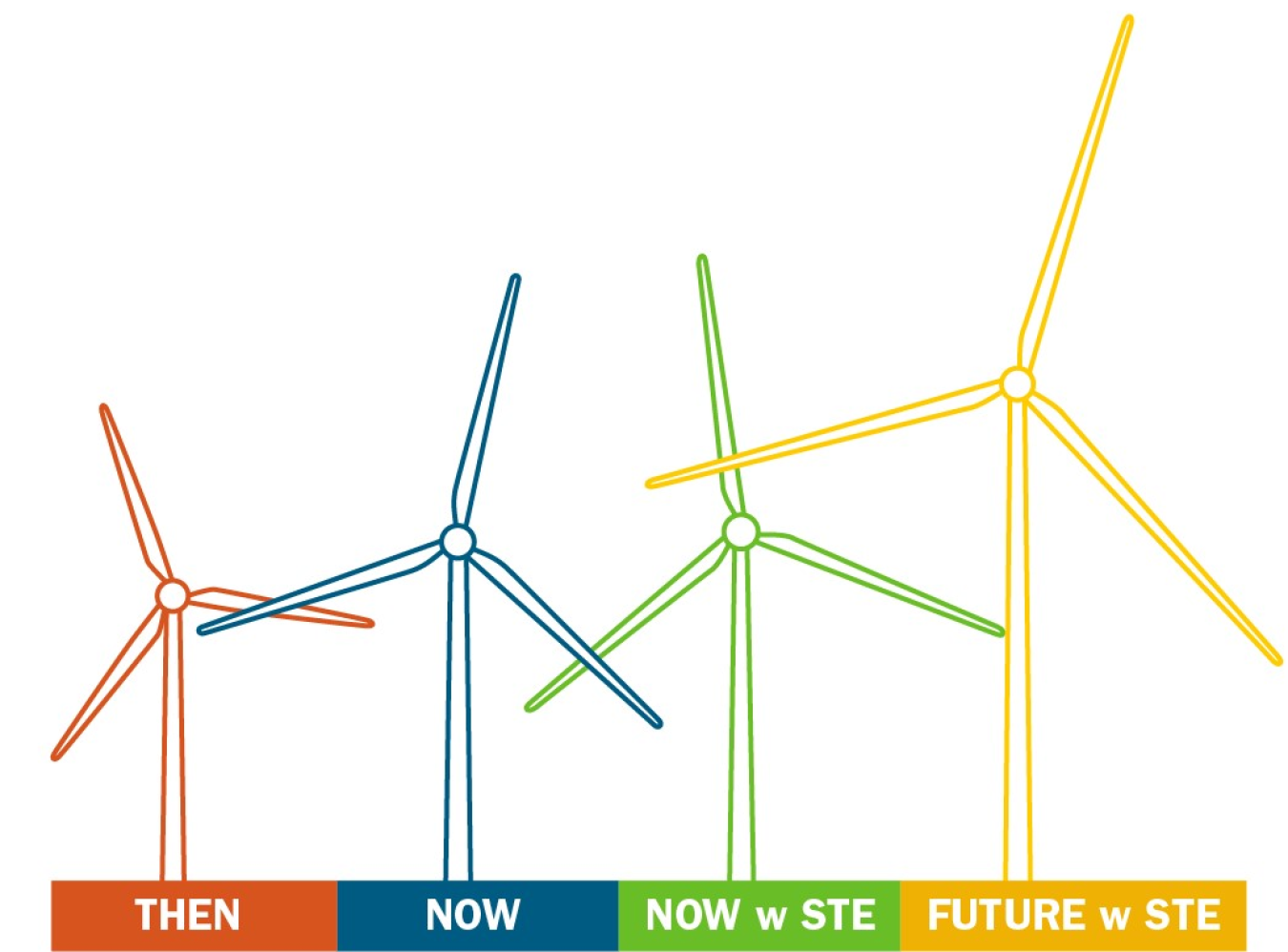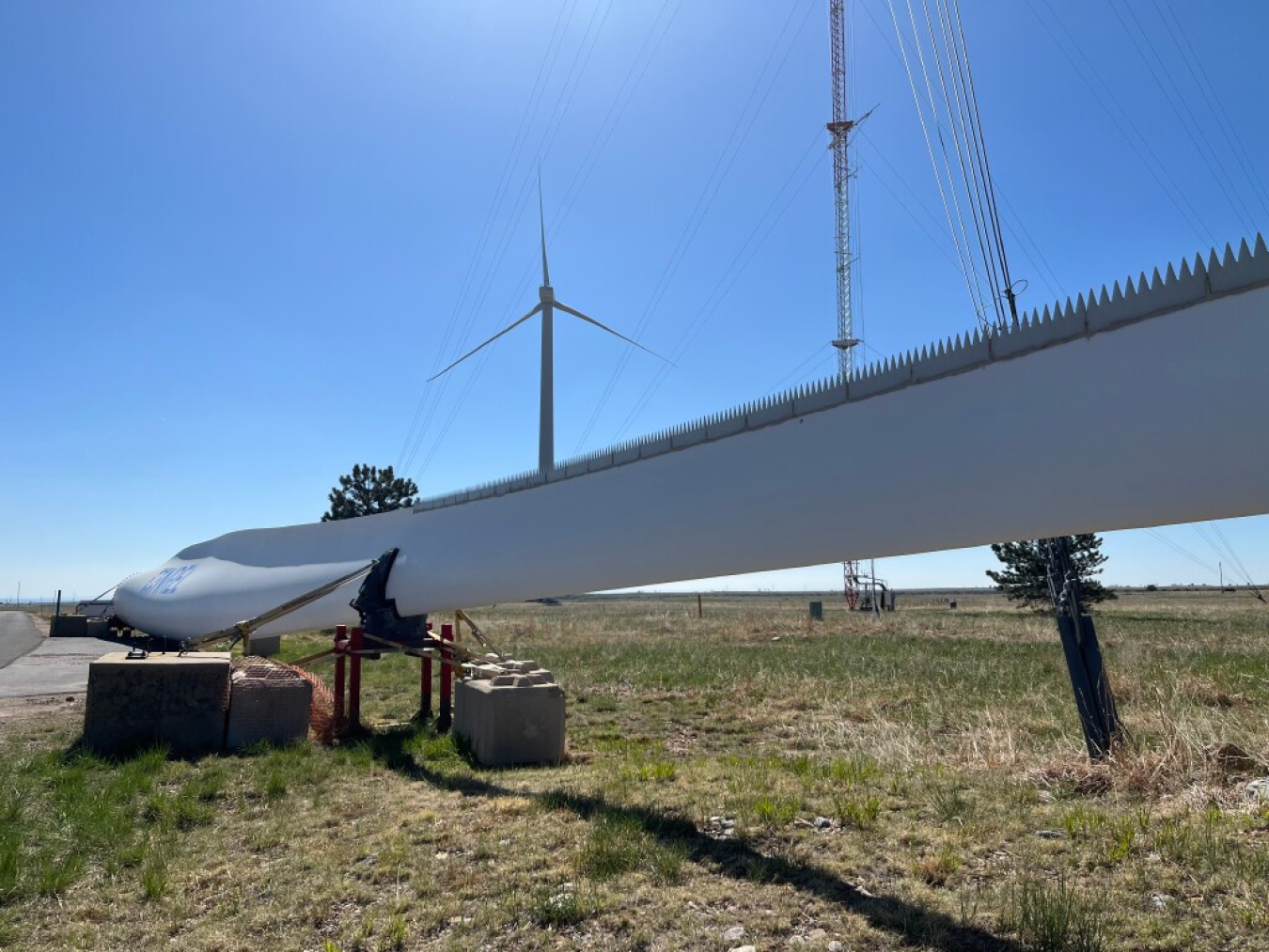A new Berkley Lab analysis finds that despite an expected future reduction in the number of turbines per power plant, the total estimated annual energy output of wind plants will increase due to larger, more powerful wind turbines.
Wind Energy Technologies Office
February 8, 2024Decarbonizing the electric sector in the United States will require rapid deployment of vast amounts of land-based wind energy. The United States today has just over 145 gigawatts (GW) of installed wind energy capacity from about 73,000 turbines across 43 states. Domestically, achieving a net-zero-carbon electric sector could require around 2,000 GW of installed wind and solar power capacity. Yet, the continuously evolving technological, social, and market factors of wind energy mean that future deployment patterns and related impacts may differ substantially from those of the past and present.
Most notably, turbines are getting larger in every dimension, with taller towers, larger rotors, and higher-rated capacity (the maximum power output of turbines)—but as individual turbines get more powerful, they may also get louder (when measured at the base of the turbine). This upsizing is driven largely by project economics. Larger turbines tend to generate energy at a lower cost (per kilowatt-hour), and larger rotors can also boost a wind power plant’s market value on the grid by helping the plant produce more energy when it is needed most. But the siting, permitting, and deployment of wind power plants are not only an economic question, but also a social question.
“Local community acceptance of wind power projects can be strongly influenced by visual and sound impacts as well as local economic impacts. But all of these impacts vary as wind turbine technology and development patterns evolve,” said Ben Hoen, a researcher at Lawrence Berkeley National Laboratory (Berkeley Lab). “This led us to ask, ‘Will local communities be better or worse off when hosting future wind power plants compared to those of today?’”
A Berkeley Lab analysis, published in the journal Applied Energy, simulates the development of 22 unique projects at two different typical wind energy sites using 11 different wind turbine models from the three largest (by market share) U.S. manufacturers. The researchers compared estimated annual energy output, total installed power capacity, numbers of turbines, and residential sound-level patterns between projects using older (2011–2020; “Then”), recent (2019—2020; “Now”) and planned (2023–2025; “Future”) turbine models sited within a fixed land area.

These periods were chosen to represent, respectively, turbines most frequently installed in the United States in (from left to right) 2011–2020 (“Then”), 2019–2020 (“Now”); and 2023–2025 (“Future”). All “Future” turbines are expected to have serrated trailing edges to reduce sound levels (STE), so separate projects were designed using turbines representing “Now w STE” (with “w” standing for “with”) and all “Future” turbines contain STE to align with manufacturer expectations. Figure by John Frenzl, NREL.
Wind turbines installed in the “Future” period (2023–2025) are expected to increase in size by an average of 60% from the average of those installed in the “Then” period (2011–2020), growing in total height (from base of the tower to the tip of the blade at its apex) from 122 to 202 meters. This increase in turbine height, coupled with larger rotor diameters (the diameter of the circle swept by the turbine blades) decreases the number of turbines that can be installed in the fixed land area at the two typical sites. Accordingly, the average number of turbines is expected to decrease by 60% (from 222 to 89) at those sites.

Serrated trailing edges on a turbine blade at the National Renewable Energy Laboratory’s Flatirons Campus in May 2023. (Photo by Prateek Joshi / NREL)
Despite this substantial reduction in the number of turbines in each wind power plant, the total installed capacity and estimated annual energy output of those plants would increase (by 11% and 60%, respectively). These output increases are driven largely by significant increases in total installed power capacity and efficiency of future turbine models.
The change in the build of individual wind turbines and the number of turbines in wind plants will also impact noise levels. Despite the fact that each individual larger, more powerful wind turbine may be louder at its base, there will be fewer turbines overall in each wind plant and they will be constructed further from neighboring homes due to setback requirements. Therefore, the average sound levels experienced by neighboring homes are expected to drop by 18% in the future. To learn more about how neighbors experience sound from wind turbines, see WINDExchange: Wind Turbine Sound.

At 300 meters away, which is the nearest distance a wind turbine typically is to a building, the sounds produced by a large wind energy project range from 35–45 decibels when adjusted to correspond to the hearing threshold of the human ear (also known as A-weighted decibels or dBA). This is far below the sound level that puts humans at risk for hearing impairment. Graphic by Al Hicks, NREL
“These results suggest that future turbines and plant layouts could be a win–win for communities hosting wind power plants and the developers and owners of those plants,” said Rand. “But technology and wind development should also consider the needs of individuals and communities. More research is needed to understand community perceptions of the visual and local economic impacts of future turbines, especially given that increased size could mean increased visibility.”
Needing fewer turbines per wind farm might allow power plant developers more flexibility when placing them on the land, potentially creating greater opportunity to avoid culturally and environmentally sensitive areas. Higher project capacities and output could also lead to more local economic benefits to communities hosting wind power plants, like additional tax revenue and rising incomes, thanks to job holders constructing or operating the plant and increased spending by workers.

